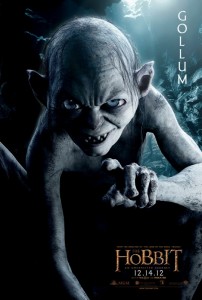 The Broadcast Film Critics Association has announced their nominees
The Broadcast Film Critics Association has announced their nominees
for 2013, and The Desolation of Smaug has received 5 nods for Best Art Direction, Best Costume Design, Best Make-up, Best Visual Effects,
and Best Actress in an Action Movie (Evangeline Lilly). Continue reading “The Hobbit: The Desolation of Smaug nominated for 5 Critics’ Choice Awards”
Tag: visual effects
 In an interview with lansingstatejournal.com, visual effects motion control operator Paul Maple discusses his work on numerous films and television series and how his programming skills got him work on The Hobbit.
In an interview with lansingstatejournal.com, visual effects motion control operator Paul Maple discusses his work on numerous films and television series and how his programming skills got him work on The Hobbit.
MAPLES is one of a handful of people in the world working as a motion control operator, one of many ways to create visual effects in films.
At its heart, his skill employs computer programming to control a camera crane. And he is good at it, having been nominated for three Emmy Awards.
In the case of Maples’ work on “The Hobbit” and “Star Trek:Deep Space Nine,” the programming can do things like create a twin, make one actor look much larger than another (think Gandalf and Bilbo), and effect different speeds in music videos.
“They’re camera tricks, but it all has to be very precise to work,” he said.
“The 3-D guys can import my camera move data into their computers to recreate my shots in a virtual world. I can also receive moves from them.”

“It’s changed almost completely,” Letteri says. “On the outside, you want Gollum to look like the same character, but he’s completely different” underneath.
The biggest change from the first set of films is the way that actor Andy Serkis’ performance is captured and analyzed in order to create the digital character, according to visual-effects supervisor Eric Saindon. “Our facial capture has progressed leaps and bounds,” he says. “Now we actually capture all of Andy’s performance, when he’s acting with Martin (Freeman) in Gollum’s cage on set. We have a small camera attached in front of his face that captures his exact facial performance. Rather than an animator going in and doing it frame-by-frame, the computer analyzes Andy’s performance and then fires Gollum’s muscles to do the exact same thing. So the first half of the animation, which is the raw mo-cap data, is really Andy.”
“We know so much more about how the face works,” Letteri adds. “When people communicate face to face there are so many things that are going on that you really have to study now and put into the characters. We hope that people recognize that there’s this extra layer of depth.”


